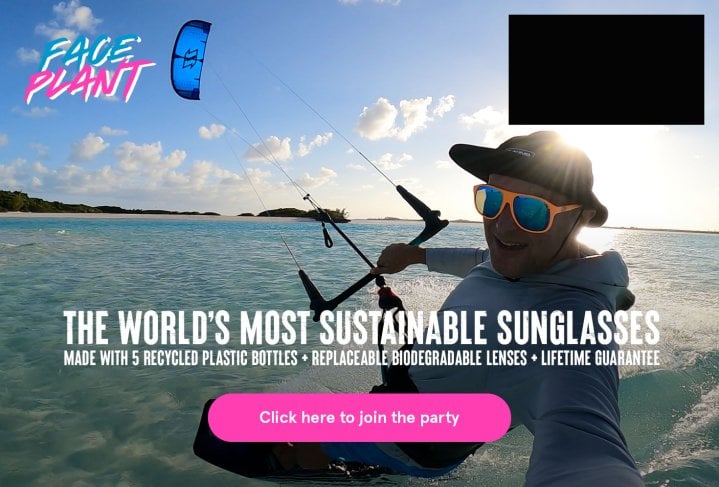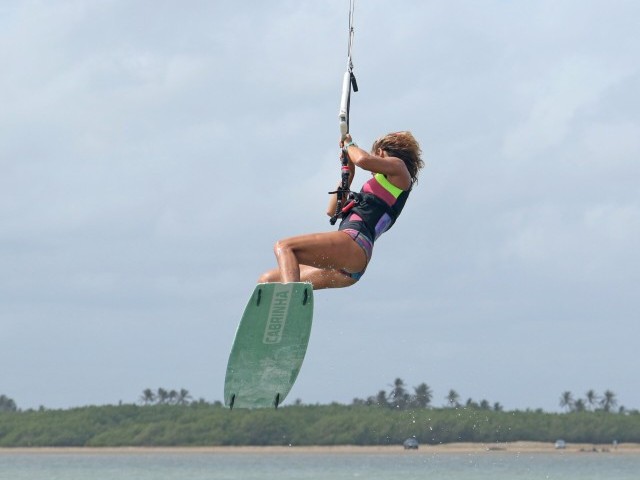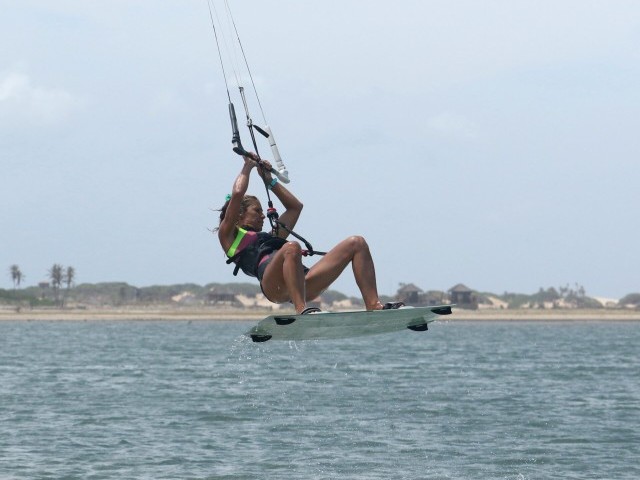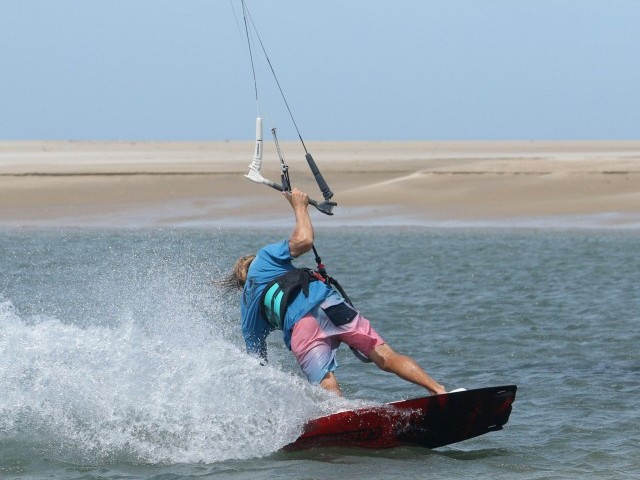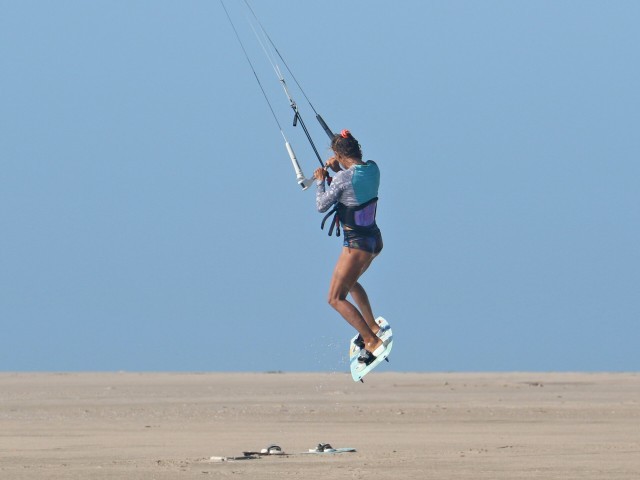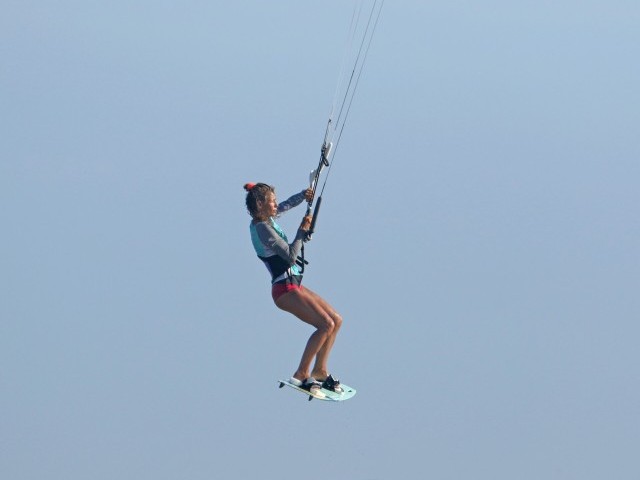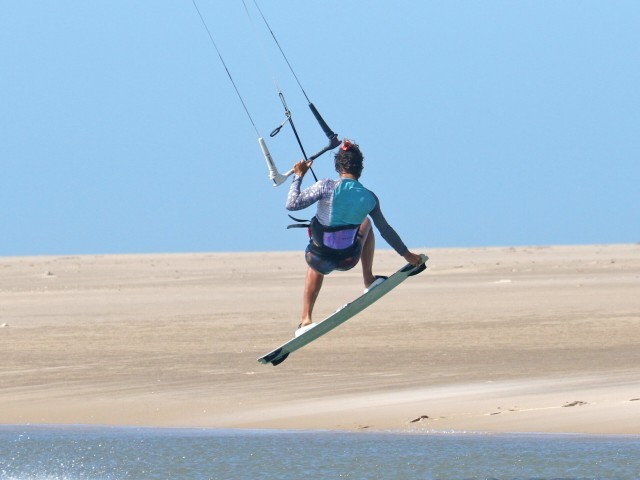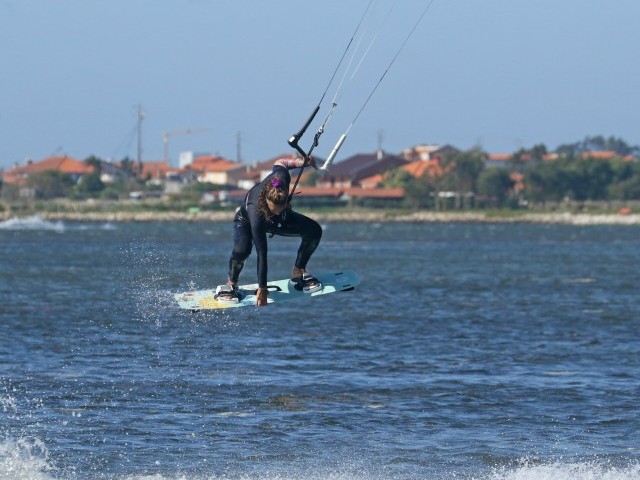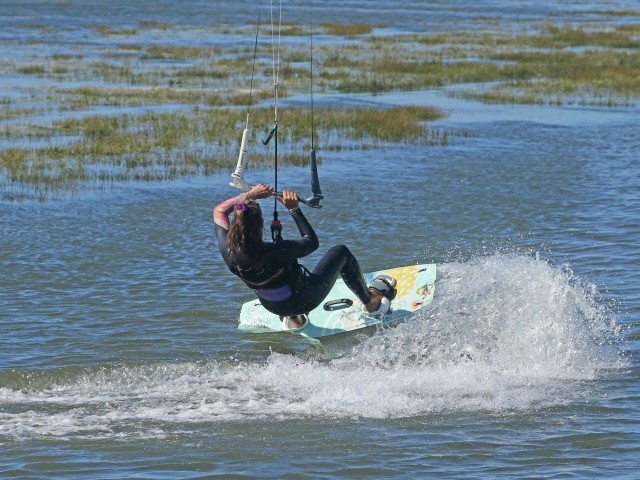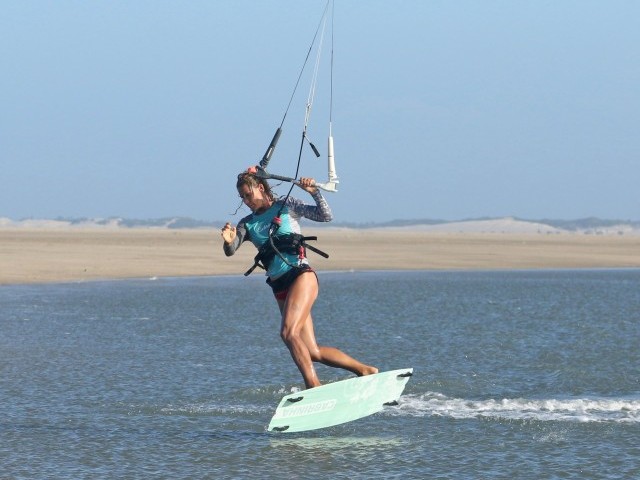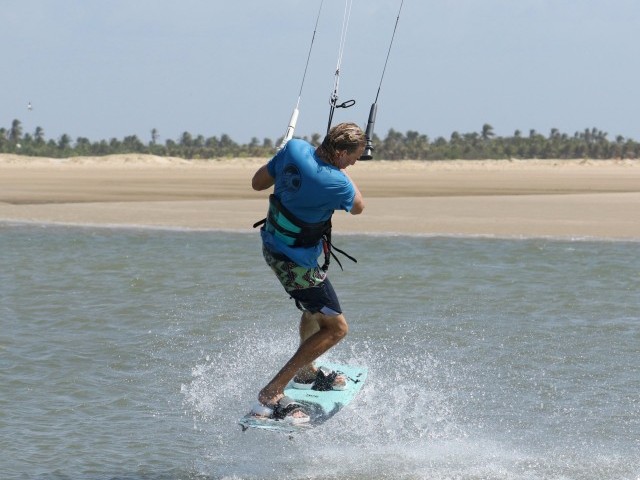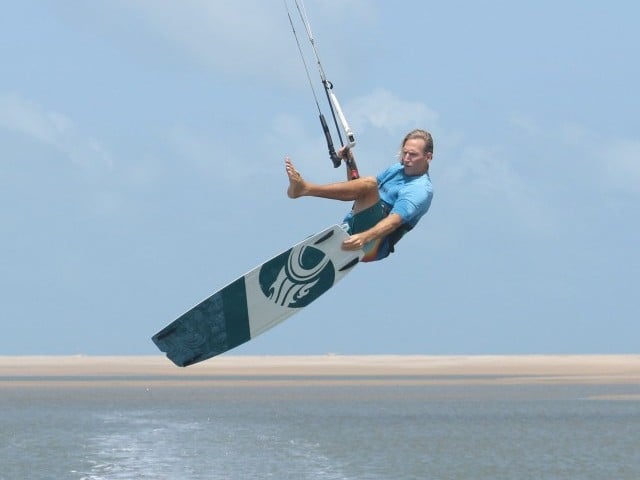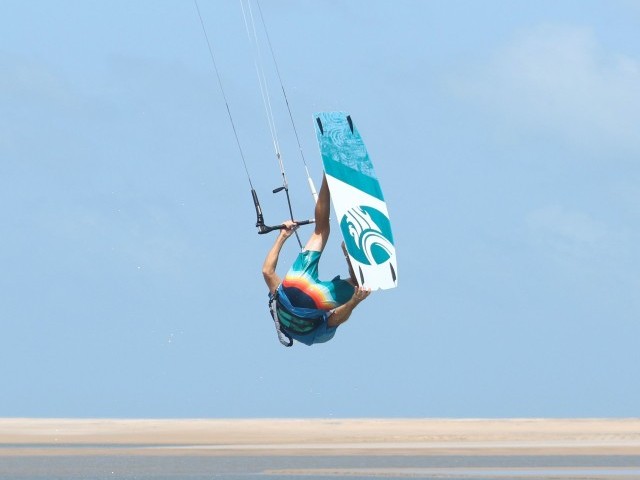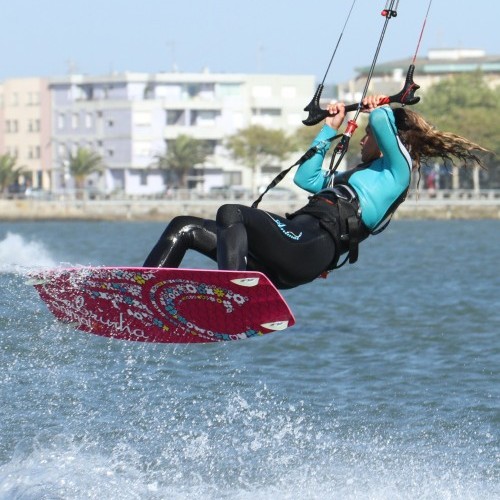
Back Loop From Toeside
Technique / Intermediate
Introduction
This is another great hooked in trick, which leads on to a world of opportunities once you crack it. And even for those more advanced riders this will give you something else to do when it’s too windy to unhook. Once again you can hang it on to any move you land toeside for a tasty combo. It’s also a pleasure to have a move whose name is self-explanatory.
As we’re sure you may have guessed, the rather obvious building block for this move is to have a good solid toe side edge. Even if you are happy throwing front rotations from toeside, you will find the take off into a backloop from toeside somewhat unusual. Also to make this more achievable we will be showing you the sent variation, so you’ll be using the kite to help you get up off the water. To learn this using only pop and no kite will just make life hugely more difficult.
Best bet is to have a look at the key stages of the approach and take off in detail, as once you manage them, and get up off the water with the initiation into a backloop the completion of the rotation and landing should be a doddle.
The Approach
The first thing you’ll need on your toe side is speed, so on your approach don’t hold back, and if you feel you need more, work the kite and/or bear off the wind a little to accelerate. If you’ve got enough speed park your kite around 1 or 11 o’clock. Any lower and you won’t be able to hold your edge as you send your kite up. Any higher and you won’t be able to get on a decent edge before sending your kite. You need the speed so that you are really planing, which in turn will stop the board sticking as you try and take off. On toeside and particularly in choppy water holding speed can be tricky.
Pic A. To keep speed its important to have the bar trimmed near enough to you, so that you can still control the kite whilst keeping your body committed to windward and the board between you and the kite. Here although Karine has started to send the kite her body position is all about transforming the pull of the kite into forward energy. Her hips are upwind of the board and her shoulders are upwind of her hips, all in a straight line – she is not breaking at the waist. If her bar was too far away, her shoulders would be pulled over her hips and her edge would not be as effective.
In this picture Karine has already started to send the kite for the jump and as a result is turning her hips more upwind. This helps her to edge stronger against the lifting kite and also keeps the weight on the back foot. If her weight was to go forward she would have too much board in the water and it might stick on the take off. To achieve this Karine extends her front leg, which pushes her hips back over her back foot.
The Take Off
Pic B. Karine has sent the kite back quickly but not far, to just past 12. Her aim much like a heelside jump is to keep the back foot planted in the water and resisting the pull of the kite as long as possible. However due to the nature of toeside, rather than trying to carve as hard into wind, which would mean bending the front leg and really getting her weight upwind of the board Karine now pushes all her weight through her back leg and leans her shoulders back towards the tail of the board. As she feels the kite lift, she pulls on both hands to level the bar and stop the kite flying too far behind her
Pic C. The actual moment of leaving the water. You can see how Karine has her back leg extended and her shoulders are twisting and moving downwind over the board towards the kite, simply put Karine is going up and around as she normally would for a back loop. However if she was heelside she would still have her weight upwind of the board, resisting. This is the key here, to actually twist upwards but towards the kite, so move your head and shoulders as if you are trying to see something high up in the sky but to one side and slightly behind you. Really extend your back leg to push you up there. This allows the board to come up out of the water without catching or burying itself. If Karine tried to turn upwind and away from the kite she would just spin out of her foot straps and leave the board where she started!
Pic D. From here on, if you have got off the water you are now into a bog standard back loo. You can see that Karine has already started to redirect the kite forward by pulling on her front hand. She has the bar pulled in to keep tension on the lines and the kite alive. She has brought her knees up to get balanced in the air and increase her rotation speed. And finally she has turned her head to look over her front shoulder so that she continues to rotate and will be able to anticipate and prepare for her landing.
Top Tips
The initial motion of throwing yourself up and around is the one thing which will make the take off work and as we said is exactly what you should be doing for a back loop anyway – so practice this movement at home, on the train or at the supermarket, as getting the motion on land is the best way to start.
Do use your back leg to extend you upwards, it’s a dynamic movement that you need in many kiting moves, and going up and around is the fundamental to everything backloop, hooked or unhooked!
If you are guilty of “sometimes” just spinning into your back loops it will pay dividends to practice this movement from heelside before attempting it from toeside. Following that the main difference is that this movement from heelside pushes your body upwind of the board and around, whereas from toeside it will allow your body to move towards the kite. If you look at the first four picture in Sequence 1 you can really see how the Karine’s body has done all the work whilst, twisting and going with the kite, whilst the board is still pretty much pointing in the same direction!
So to Summarise from Sequence 1
- Pic 1. Karine approaches with good speed and a solid toeside edge, kite at 1 o’clock, and weight over her back foot. She sends the kite hard but short with her back hand.
- Pic 2. As the kite starts to lift Karine moves all her weight back to free the front of the board. This is where board speed is key.
- Pic 3. The kite pulls Karine up, she throws herself up and around, lifting her right shoulder whilst turning her head.
- Pic 4. With the board cleanly off the water Karine brings the bar down towards her hips to keep tension on the lines and already starts to redirect the kite forward by pulling on her front hand.
- Pic 5. And she brings her knees up for better balance.
- Pic 6. Karine looks over her front shoulder to keep the rotation going.
- Pic 7. All the while Karine keeps the bar in and her knees up.
- Pic 8. Coming around her rotation Karine looks towards where she thinks she will land and dives the kite with her front hand to stop her rotation.
- Pic 9. As she drops down Karine extends her legs ready for landing.
- Pic 10. And touches down tail first for a smooth and comfortable reception.
Common Problems
The main issue her will be leaving the board stuck in the water and just spinning out of the straps.
You need the speed to allow the board to release, you need your weight back so that only a small amount of the board is sticking and you need to go up on your take off as well as around as this will help cork the board out of the water.
That said if you concentrate on speed and forget about edgeing you’ll have the same problem of leaving the board behind.
Keystones
- Speed and Edge
- Weight back
- Send kite hard but short
- UP & round
- Redirect with front hand
This technique article was in Issue 28 of IKSURFMAG.
Related
By Christian and Karine
Christian and Karine have been working together as a coaching team, running improver to advanced kitesurfing clinics since 2003.









